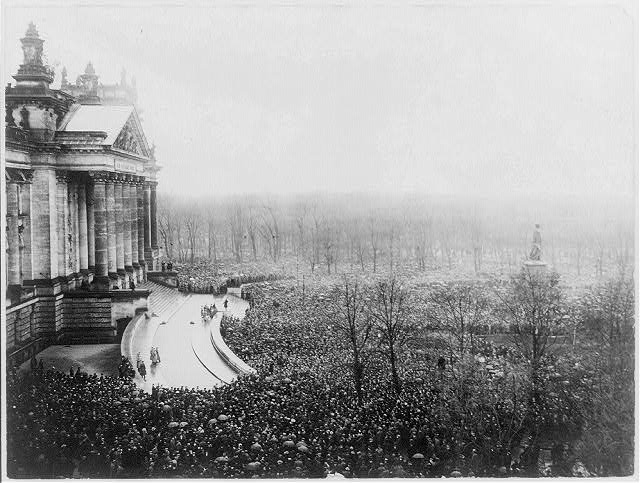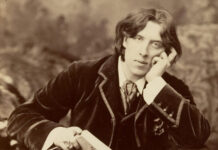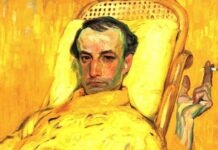a review by Peter Gengler
~
The failure of interwar Central Europe’s democracies remains fertile ground for scholars in the 21st century. In particular, the Weimar Republic’s promises and failures, its vibrant intellectual and artistic communities, and its ultimate collapse in 1933 continue to fascinate and haunt academics and lay audiences alike. Weimar Germany remains the object of intense interest given the barbarity that followed its demise, yet it also serves as a compelling warning about the fragility of democracy.
Stefan Jonsson’s Crowds and Democracy examines the tumultuous years between 1918 and 1933 in an original and bold manner, contributing fresh insights to what could otherwise prove a hackneyed subject. In particular, the study’s creative approach and analysis of “the masses” contributes to the literature on Germany’s and Austria’s interwar politics and culture, and more generally raises provocative questions about the challenges of participatory politics, democratic representation, and the individual’s relationship to these processes. Indeed, as Jonsson points out, Europe’s austerity programs and the public outrage, manifested in the recent resurgence of nationalist right-wing parties and fascist movements in the European Union, demand a renewed focus on interwar social movements.
Stefan Jonsson’s background, training, and research interests suit him well for the type of multidisciplinary investigation that he attempts here. He received his Ph.D. in literature from Duke University, and currently is a professor of ethnic studies at Linköping University in Sweden. The subject of Crowds and Democracy continues Jonsson’s previous work, in which he charted the European understanding of the masses from 1789 to 1989. 1 The monograph under review explores 1920s Austrian and German mass psychology, crowd theory, and the idea of “the masses” not simply as intriguing phenomena, but rather as problems in their own right caused and produced by mass mobilization, the social sciences and arts, and the ambivalences of democracy. Given the author’s expertise and familiarity with different disciplines, Crowds and Democracy combines and commands the literature and theories of literary criticism, philosophy, and intellectual and cultural history in an impressive and authoritative way.
Jonsson traces the trajectory of the discourse and idea of “the masses,” concentrating on the years between 1918 and 1933. Each chapter represents a sort of case study as he analyzes the works of intellectuals or artists who are symbolic of a particular school of thought or new direction in scholarship. Jonsson thus shows how the meaning of “the mass” became a subject of investigation after the 1890s by mass psychology and mass sociology. This widely accepted notion held that the mass represented the opposite of bourgeois individuality, organization, education, masculinity, and positive qualities in general—the crowd was defined through negation. This assumption nevertheless gave way to a variety of views that attributed rationality to the crowds and sought to understand their internal dynamics, seeing “the masses” as a social formation in their own right.
Jonsson shows how, despite their increased scrutiny of the masses, German and Austrian intellectuals by the 1920s were no clearer on comprehending the phenomenon and coming up with a suitable theory for understanding it and that by this time no consensus on who constituted the mass and why they were so prevalent in interwar politics existed, though the dominant opinion among sociologists was that they were a symptom of crisis and instability—the “alarm bells of history” (84). These social movements were an “allegory,” Jonsson contends, “evoked by the need to mark powers of change that appeared to govern the world of modernity…the masses connoted a dimension of social existence that caused fear and anxiety precisely because it disrupted the horizon of values and meanings through which class and gender identities had until then been affirmed, cultural hierarchies secured, and social order constituted” (112).
Though they aroused great trepidation, during the 1920s the idea of “the masses” saw greater contestation as well. Indeed, Jonsson concludes that “[t]o enter the cultural landscape of interwar Germany and Austria is to encounter competing views, theories, and images of crowds” (179), each with varying agendas and presumptions that constructed an image of them reflecting socialist egalitarianism and promises of a democratic society to cultural pessimism and fears of bedlam and anarchy. In short, Jonsson’s study seeks to trace the epistemological foundations of “the mass” in European thought.
Complicating this study further, Jonsson argues that the discourses on the masses in interwar Europe actually revolved around the problem of democracy. The period saw a proliferation of contesting ideologies, each with a different view of how to constitute society and the polity. Between the poles of revolution and fascism, thinkers articulated various visions of the crowds that reflected the fractured political landscape. “The masses,” therefore, could be constructed in an exclusionary way or in such a manner that they heralded promises of a better future; the throngs of people heightened fears of proletarian revolution or inspired political action. “The masses” therefore touched on the fundamental problem of democracy: how to embody and speak for the people, how to organize them, and how to represent society as a whole. As Jonsson concludes, these social movements “were never anything more, and at the same time never anything less, than the signs and symptoms of unresolved problems concerning the adequate political, cultural, and aesthetic representations of socially significant passions and political desires” (253).
There are a great many achievements that Jonsson can lay claim to. First and foremost, one cannot help but admire the wealth of material that Jonsson mines. Delving into novels, art, philosophy, historiography, and sociology, the author authoritatively marshals a wide range of sources and subjects them to astute analysis. A number of scholars ranging from the fields of literature, cultural studies, history, the social sciences, film, and art will find intriguing insights and benefit from the lens through which Jonsson reads this vast collection of materials.
Historians of Germany will also be pleased that Jonsson’s treatment of the Weimar period was nuanced and avoided notions of an inevitable collapse into dictatorship. Moreover, Crowds and Democracy is not encumbered by the fascist specter. Jonsson quite rightly asserts that democracy in the interwar period—though crisis-ridden—cannot be reduced to Hitler’s rise to power. Thus, it is refreshing that Nazism is not the predominant focus. Though it may seem obvious for specialists, Weimar was not defined by fascism and the republic should be treated in its own right. Jonsson’s interpretation takes into account the crises and dangers facing the fledgling democracies, but he also is careful to differentiate his account by judiciously discussing the emancipatory ambitions within Germany’s and Austria’s first republics.
Jonsson’s erudite treatment of the sociological profession in the interwar period is another remarkable feature of this study. Readers will be charmed with the ease and clarity with which Jonsson disseminates the writings of scholars such as Georg Simmel, Theodor Geiger, or Leopold von Wiese. The sections of the book concentrating on intellectual history convincingly demonstrate how the idea of “the masses” developed and how sociologists and thinkers contended with what was considered the core issue of the day. Moreover, Jonsson differentiates between the actual phenomenon of mass politics and the “idea” that was constructed by these intellectuals, with all of their presumptions and biases. The result is stimulating, as Jonsson places theorists in dialogue with one another and shows how European intellectual thought, psychoanalysis, and philosophy developed between 1918 and 1933.
Despite these achievements, Crowds and Democracies also suffers from some deficiencies. To begin with, one wonders what audience Jonsson attempted to reach. The book’s intellectual density means that few beyond academia will find it accessible. Simply put: this is not an easy read. The long and meticulous analyses and focus on theory require an engaged and informed reader, especially since some of the historical context—while generally correct—is nevertheless cursory and assumes a reader well versed in Central European history.
The organization, structure, and style of the book are also somewhat distracting. Generally, Jonsson’s study follows the trajectory of the discourse on “the masses” chronologically, but often subchapters elucidate a particular theme that requires back-tracking. The book essentially is a collection of essays, with the result that taken together, the book meanders and contains redundancies. Sprawling chapters ranging between 50 to over 70 pages could have been broken up more effectively. The argumentative thread is also not always clear; 47 pages in, the author is still explaining what his book will do and how it will be structured. The unclear organizing principle and diffused arguments and objectives detract from the overall work. The lack of a bibliography is also disconcerting. Crowds and Democracy would have benefited from greater organizational clarity and a sustained and coherent argument, thereby guiding readers through an already challenging intellectual terrain more carefully.
These criticisms of style aside, there are also some shortcomings with Jonsson’s argument. His claim that “few authors have connected the theme of the masses to Weimar history in any deeper sense” (xv) implies that this book seeks to remedy this gap in the literature. Yet while Jonsson succeeds in his discussion of how “the masses” were viewed, he does not fully accomplish his goal of unifying the discourse on mass movements and the actual phenomenon itself. What we are left with is a study of how intellectual and cultural elites contended with “the mass” theoretically and aesthetically. This does not reveal, however, what goals mass politics had and what ideologies drove them. We have little sense of the dynamics of the social movements, what strategies they pursued, or the self-perception of these entities. Jonsson’s argument assumes that the perceptions of Weimar luminaries—as astute or revealing as they may be—had a profound influence on the construction and instrumentalization of the concept of “the masses.” But this phenomenon was not a mere academic or cultural construction. As the author himself points out numerous times, mass politics were a real and defining feature of the interwar period.
A greater attention on what animated and inspired the crowd would have been of great relevance for the central issue at hand: how “the masses” were imagined and perceived. For instance, taking into account the role of the 1917 Russian Revolution as inspiration for some and specter for others would have both explained the aspirations and fears that Bolshevism unleashed in Germany and which informed how elites viewed mass politics. Not only was the prospect of a proletarian revolution the source for socialist ambitions, it also fueled the animosities of reactionaries who dreaded such an uprising. The intellectual content of the various völkisch movements, the desires for a Volksgemeinschaft, and the inspiration of Mussolini not only motivated rightwing factions, they also had a profound effect on how contemporaries viewed the crowds in the streets. Yet all of this is muted in Jonsson’s study, so that his connection of “the masses” to Weimar history is limited. As intriguing as the observations of sociologists and artists may be, it nevertheless fails to give the crowd agency and in any case is a very narrow focus. In short: a greater attention to the actual crowds and not just how they were perceived could have fleshed out the concept “the masses” more thoroughly. A firmer historical grounding would have only added to this study. 2 As it stands, from a historian’s perspective this book suffers from a lack of tangibility and empiricism, and offers only limited insight into the phenomenon of mass politics and Weimar political and cultural history.
A second shortcoming with Jonsson’s argument concerns his methodology. The claim that discussion of mass politics was ubiquitous and seen as a bellwether for the modern age would have found greater resonance by broadening the analysis beyond cultural elites. It is questionable how central the thinkers chronicled in this study were to the public discourse of the era. Jonsson admirably outlines the contours of the theoretical construction of “the masses” and meticulously documents how they were viewed. Yet missing is a whole other discourse beyond the ivory towers of academia and the artistic community which contemplated the political stakes. How much of this debate depended on Freud, Musil, Adorno, or any number of other notable thinkers, some of whom wrote in exile or never even finished their analyses? Sources such as newspapers or materials of politicians engaged in mass mobilization would have enriched Jonsson’s study of how contemporaries viewed this phenomenon and capitalized on it or struggled against it. He does analyze socialist publications such as the Arbeiter-Illustrierte Zeitung, but a greater use of similar source types would have bolstered his argument. What about the NSDAP publication, The Völkischer Beobachter? Jonsson focuses on rightwing thinkers such as Ernst and Friedrich Gerhard Jünger for another viewpoint on mass politics, but surely other, more widely disseminated sources could have benefitted Jonsson’s study.
Overall, Jonsson has approached the interwar period in a fresh and creative way, demonstrating that the struggle to represent and understand the masses reflected the instability of democracy and the perplexity of the modern individuality. Whether seeing masses as signals of cultural decline or promises of a new, egalitarian society, Jonsson admirably shows how the sweeping political and social changes after 1918 shook European thought to its core. It is not just a unique history of Weimar, but also an understudied aspect of the ambivalence of democracy and the problems of democratic representation. Intellectual historians, sociologists, and scholars of art and cinema will find Crowds and Democracy a rewarding read. Nevertheless, beyond specialists, this book will not find a wide readership, and those seeking to better understand Central European political or cultural history would be better served by starting with more empirical studies.
_____
Peter Gengler is a Ph.D. candidate studying modern German history at the University of North Carolina at Chapel Hill. His dissertation is on expellee interest group politics and the construction and instrumentalization of expulsion narratives in public discourse in the Federal Republic of Germany between 1944 and 1970. From 2014 to 2016, Peter will be conducting dissertation research in Germany with support of the German Academic Exchange (DAAD) and the Berlin Program.
_____
notes:
1. Stefan Jonsson, A Brief History of the Masses: Three Revolutions (New York: Columbia University Press, 2008). Back to the essay
2. For excellent historical studies of Weimar, consult Detlev Peukert, The Weimar Republic: The Crisis of Classical Modernity (New York: Hill and Wang, 1992); Heinrich August Winkler, Weimar, 1918-1933: die Geschichte der ersten deutschen Demokratie (Munich: Beck, 1993); Peter Gay, Weimar Culture: The Outsider as Insider (New York: Norton, 2001); and Eric Weitz, Weimar Germany: Promise and Tragedy (Princeton: Princeton University Press, 2007). Back to the essay




